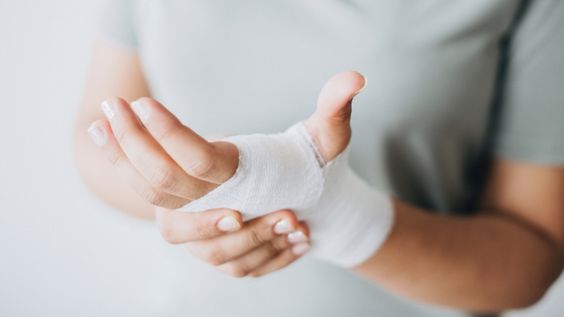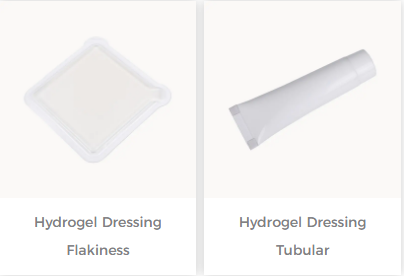Extensive burns are serious injuries that often require long-term treatment and care.
The dynamic process of burn healing:
Burn healing is a complex process involving multiple physiological and biochemical processes. The first is the inflammatory phase: the first 1 to 3 days after a burn are the inflammatory phase. At this time, symptoms such as redness, swelling, pain, and exudation will appear around the wound. This is because burns cause tissue damage and cell death, leading to an inflammatory response. During this stage, the body releases a variety of cytokines and inflammatory mediators that attract white blood cells and other immune cells to the wound and remove dead cells and bacteria. Then to the exudation period: The 3rd to 7th day after the burn is the exudation period. At this time, the amount of exudate around the wound will gradually increase, and a film will form on the surface of the wound. This is because the inflammatory response leads to an increase in vascular permeability, allowing intravascular fluid and cellular components to leak into the tissue space. During this stage, the body accelerates wound regeneration and repair, promoting the growth of new blood vessels and the formation of new tissue. Then comes the repair period: The 7th to 21st day after the burn is the repair period. At this time, the amount of exudate around the wound will gradually decrease, and the wound surface will gradually dry and scab. This is because the body gradually controls the inflammatory response and begins to accelerate wound repair and regeneration. During this stage, the body promotes the regeneration and division of epithelial and stromal cells on the wound surface to form new skin tissue. At the same time, the body will accelerate the contraction and reduction of the wound, causing the wound area to gradually decrease. The final maturation stage: The maturation stage begins after the 21st day after the burn when the wound surface will gradually smooth and return to normal skin color. This is because the body gradually completes wound repair and regeneration, and new skin tissue gradually matures and consolidates. During this stage, the body accelerates the vascularization and neuralization of the wound, allowing blood flow and nerve function around the wound to gradually return to normal.
The following is a clinical case analysis of a patient with extensive burns:
The patient is a 40-year-old male who suffered extensive burns all over his body due to a work accident, accounting for approximately 60% of the body's surface area. On admission, the patient showed symptoms such as skin redness, swelling, blisters, pain, and fever, as well as symptoms of respiratory burns. After comprehensive evaluation and treatment, the patient's condition gradually stabilized.
Healing:
1. Early treatment: Rescue and treatment were provided immediately after the patient was admitted to the hospital. Airway management and respiratory support, including tracheal intubation and mechanical ventilation, were first performed. Fluid resuscitation and nutritional support, including intravenous fluids and enteral nutrition, were then performed. Measures such as pain management and infection prevention were also implemented.
2. Wound treatment: You can choose Hydrogel Dressing, which has good water absorption and water retention, which can effectively keep the wound moist and promote wound healing and repair. At the same time, hydrogel dressings can reduce wound evaporation and water loss, avoid wound dryness and scabbing, and reduce the occurrence of pain and infection.
3. Treatment of complications: Patients develop a variety of complications during treatment, including infection, dehydration, electrolyte imbalance, etc. These complications require prompt management, including antibiotic treatment, fluid resuscitation, and electrolyte regulation.
4. Rehabilitation care: Patients need rehabilitation care and psychological support after treatment. Rehabilitation care includes wound care, nutritional support, rehabilitation training, and other measures. Psychological support includes psychological consultation, psychological counseling, and other measures.
Extensive burns are serious injuries that require comprehensive evaluation and treatment. Early treatment, wound management, complication treatment, and rehabilitation care are all important links in the treatment of extensive burns. At the same time, psychological support from patients and their families is also very important, which can promote the recovery and recovery of patients.
For more information on Innomed® Hydrogel Dressing, Refer to the Previous Articles. If you have customized needs, you are welcome to contact us; You Wholeheartedly. At longterm medical, we transform this data by Innovating and Developing Products that Make Life easier for those who need loving care.
Editor: kiki Jia
Date: September 7, 2023

 English
English عربى
عربى Español
Español русский
русский 中文简体
中文简体








